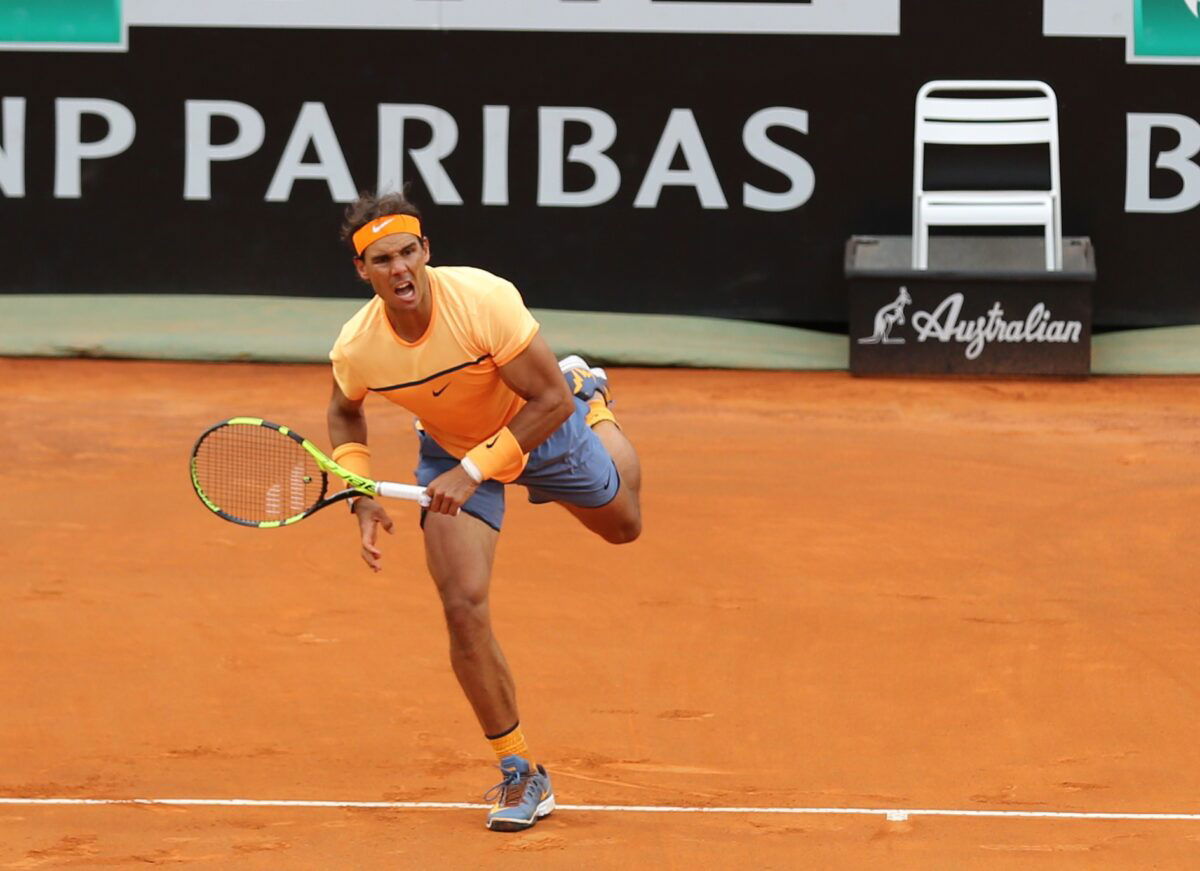Novak Djokovic has experienced just about everything in his career, and now he has one more experience to add to it. On Sunday night, Jakub Menšík beat Djokovic 7-6, 7-6 in the Miami Open final at Hard Rock Stadium to win his first-ever Masters 1000 in Miami and first ATP title. Trying to win his 100th ATP Tour title, Djokovic ran into both the power and precision of the rising 19-year-old Czech and the bad luck of having a stye emerge just under his right eye, causing discomfort, especially given that Djokovic plays in contact lenses.
The Student Becomes The Master(s) Champion 🏆 The moment @mensik_jakub_ completed his 7-6 7-6 victory over Novak Djokovic! #MiamiOpen pic.twitter.com/GDqFHrvsPB — Tennis TV (@TennisTV) March 31, 2025 The way Menšík, the big-hitting world No.

54, has played the past two weeks, Djokovic might have lost anyway, but the issues with his vision certainly didn’t help. Djokovic spent much of the night twitching with his eyes, opening and closing them as he tried to focus on Menšík’s lightning serves and heavy strokes. The combination proved to be just a bit too much on a damp, humid night of play that came after a rain delayed the scheduled start time for more than five hours.
Advertisement The loss to Menšík was more than just a missed golden opportunity to win his 100th ATP Tour title and his 41st Masters 1000. And how golden it was. Djokovic cruised to the finals of his first regular ATP Tour event since November 2023 without beating anyone of particular note, at least for him.
He beat Grigor Dimitrov, the world No. 15, in the semifinals. But Djokovic is now 13-1 against Dimitrov in his career.
He beat Sebastian Korda in the quarterfinals. Korda is the world No. 25.
Djokovic has never lost to him. He beat Lorenzo Musetti, the world No. 16, in the round of 16.
When it was over, Djokovic moved to 8-1 against Musetti, who had a losing record on hard courts last year. Musetti put up about as much resistance as a swinging door. Menšík may be one of the best players in the world one day.
He has a fearsome serve that he can blast at 135 miles per hour or kick it into the sidewall. Still, on Sunday, he was also a 19-year-old ranked 54th in the world playing the greatest player of the modern era, a competitor who has sent off two generations of players trying to knock him off the top of the mountain. Now he stays hungry, in part, by trying to beat back a third generation, especially when they are eager teenagers looking for a chance to win a match they can tell their grandchildren about one day.
While anyone can only beat the players on the other side of the net, it’s hard to imagine many more opportunities for Djokovic to win a title as important as Miami without facing Carlos Alcaraz or Jannik Sinner or anyone else in the top 14 along the way. It’s not Djokovic’s fault Alcaraz barely showed up for his opening-round match against David Goffin. Or that Sinner has been sidelined for three months because of a doping conviction.
Or that Alexander Zverev, the world No. 2, left his game in Australia and frittered away a third-set lead in his quarterfinal against Arthur Fils. Advertisement So while winning in Miami might not have been as powerful a message as it might have been had he knocked off one of the game’s big guns along the way, it could have been a major message nonetheless.
It would have been a clear statement that any reports of his impending demise following his loss three weeks ago to Botic van de Zandschulp in his opening match at the BNP Paribas Open in Indian Wells were greatly exaggerated. Last year, Djokovic suffered a similar early-round upset in Indian Wells. He sulked off to Miami, where he did some sponsor appearances but pulled out of the tournament.
This time, Djokovic buckled down for two weeks of practice with Andy Murray, his one-time rival who has become his coach. He found his hunger and his feel, and when he took to the teal and blue court of Hard Rock Stadium, he played almost perfect tennis for five matches. Against Korda and Dimitrov, his first serve flirted with a 90 percent success rate.
Serena Williams came to watch a match. So did Lionel Messi. Djokovic said he felt the pressure from the greatest in their games watching.
Disappointing them would have been poor form. He didn’t for them, and was on his way to sending that message — I may be creeping up on my 38th birthday, but I’m not dead yet. But then came Menšík, another young buck trying to get to where Sinner and Alcaraz already are and move tennis past the era of the Big Three.
Djokovic had beaten Menšík in China in the fall. But after his win in the semifinals in Miami over Taylor Fritz, Menšík declared himself ready to take on the best once more. He said he was a different player — smarter, more experienced, better.
He proved that on Sunday night, after battling his nerves all afternoon and evening as the players waited for the skies and the stadium court to clear so they could take the stage. Advertisement The loss once more calls into question whether Djokovic can get back to the top of the game. As the tour moves to the red clay of Europe, Djokovic plans to play the three Masters 1000 events in Monte Carlo, Madrid and then Rome.
If history is a guide, it may be a rough month in terms of making any more marks in the record books. While he has won Monte Carlo twice and Madrid three times, he’s often not been great at either competition as he finds his form on clay. By the time he gets to Rome, though, he’s often sliding and shaping the balls well as anyone not named Rafael Nadal ever has, but he wasn’t last year and needed an extra clay tournament the week before the French Open to prepare.
He didn’t win that either. Then it’s on to Roland Garros, which has become one of his happy places in the twilight of Nadal. The last time there he played one of the greatest matches of his career to win the Olympic gold medal, beating Alcaraz in two tiebreak sets that lasted nearly three hours.
The time before that, he had to pull out of the quarterfinals of the French Open after tearing his meniscus midway through his fourth-round win over Francisco Cerundolo. Less than four weeks later, he returned to the grass of Wimbledon, where he lost to Alcaraz in the final. For months now, other players have been feeling that Djokovic can be had on any given day.
He may still be capable of sublime tennis, but with each passing month, he seems less likely to play it. He hadn’t lost his swagger, but the aura of invincibility he had a little more than a year ago was gone. Djokovic said as much after his win over Musetti.
“I do hope and wish for Novak that you saw tonight, and then at the same time, I worked hard not to have the Novak that was playing in Indian Wells,” Djokovic said that evening. “The continuity or consistency of the level of tennis nowadays for me is more challenging than it was years ago or 10 years ago, five years ago, and I know that. That’s definitely not due to lack of hours spent on the practice court and in the gym because I still keep the dedication.
It’s there, but it just makes it a bit more challenging for me to maintain the level.” Advertisement Then again, there may not be an athlete on the planet who relishes finding new challenges and overcoming them than Djokovic. That has been one of the keys to his longevity during a career that has spanned two decades and had its share of moments when he needed to find some reason to keep going.
A hunt for consistency might not sound as sexy as knocking off a new generation of all-time greats. But one can’t happen without the other. Djokovic knows that better than anyone, which is why he has filled his schedule with more tournaments than in recent years.
In Miami, where he came oh so close to winning his first tour title in nearly a year and a half, that may have been his most important message of all — he is hunting once more. (Photo: Matthew Stockman / Getty Images).
Sports

Novak Djokovic bested by Jakub Menšík in Miami Open as hunt for history remains ongoing

Trying to win his 100th ATP Tour title, Djokovic ran into both the power and precision of the rising 19-year-old Czech.















